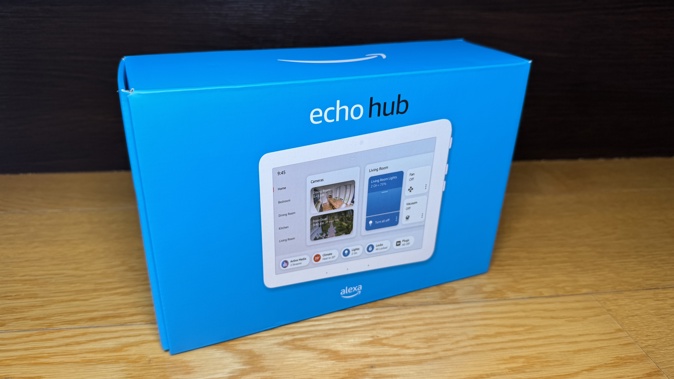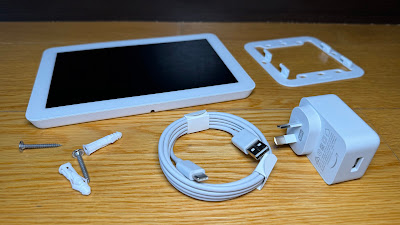
So here's my problem... and it's about the most first-world problem you could imagine. Due to my incurable tech addiction, I have a lot of gadgets.
I have security cameras. I have video doorbells. (Yes, more than one doorbell. Don't judge me.) I have lights. I have motion sensors. I have way too many smart speakers and I even have gadgets to tell me if it's raining and which direction the wind is blowing from.
I know, you're wondering how that is a problem? Sounds pretty cool. And it definitely is. If you're me. If you're living in the same house as me, perhaps not so cool.
Imagine not knowing how to turn on a light or make music play in your own home. Pretty frustrating. You'd probably be pretty annoyed at the guy who set all that up.
The real problem is, there still isn't one virtual assistant to rule them all.
The good news is, we're getting close. The Amazon Echo Hub is nearly the answer to all my smart home issues. Nearly.
Unfortunately, the tech industry got things a bit arse-about-face when it started producing IoT devices like smart lights and Wi-Fi connected speakers. Rather than all the big manufacturers agreeing on a universal protocol to control all smart devices wirelessly - think bluetooth for headphones and computer accessories or Wi-Fi for routers - several big names went off on several different directions.
While each big brand would have loved it if their customers stuck to one ecosystem, it was never going to happen. Just because Amazon makes speakers and owns companies that produce security cameras and smart plugs, that doesn't necessarily mean the Alexa-enabled product is always the best one in its specific category.
Some devices use Matter to talk to each other. Some use Zigbee or Thread. Some connect directly to your router over Wi-Fi. Some have their own unique hub that then connects to your home network wirelessly or via an ethernet access point.
Actually, I'm starting to see why my family hates me so much. I know which virtual assistant to ask if I want the air-con to turn on because I set it up. They're completely in the dark. Quite literally.
That's what the Echo Hub aims to tidy up. In many ways, it works a lot like the existing Amazon Echo Show devices of various sizes but the Echo Hub doesn't have the powerful speaker attached for streaming music or a camera to make video calls with. Instead, you get a compact, slim 8-inch display with an interactive home screen set up to give you (and the rest of the family) easy access to all your smart devices.
Well, that's the theory anyway.
The Echo Hub is boxed up with its own USB-C power supply, a fairly long cable, some screws and a wall bracket. It'll be quite inconspicuous on most walls, assuming the power point isn't too far away. If an ethernet access point is closer, Power-Over-Ethernet is also an option. If, like me, you prefer to set the Echo Hub up on a shelf or table, there are third-party stands available, like the one pictured from Sanus.
If you've ever set up an Amazon Echo smart speaker before, initialising the Echo Hub will be a familiar experience. You'll need to use the touch screen to enter your Wi-Fi password, location and Amazon account information, which these days seems like a bit of a drag. Presumably, if you've chosen this device, you already have the Alexa app set up on your phone. Surely some kind of NFC tap-and-go setup or perhaps a QR code would be a more efficient way to sync your Alexa preferences but no, you'll be left tapping and swiping both the Hub's display and the app on your phone to get everything running the way you want.
In saying that, the Alexa experience has improved dramatically over the last year or two. You can choose from a wide selection of voices and accents - both male and female. Alexa doesn't have to be Alexa anymore - the wake word can be "Computer", "Amazon" or even "Echo" and one setup option I particularly appreciated was choosing a preferred speaker to stream music on. That's because while the Echo Hub does have its own built-in speakers, they're not particularly loud or bassy. So Amazon makes it easy to designate any other Alexa-enabled speaker as the default player - as long as it's connected to the same Wi-Fi network.
They were probably hoping you'd go with another Echo - perhaps even a pair of Echo Dots like the 5th generation one they sent me along with the Hub for this review. But a compatible device like the amazing JBL Authentics 500 will work just as well and the sound quality is sublime.
Because there's no camera, the Echo Hub has a motion sensor to detect when someone comes within operating range. At this point, whichever screen you've set to run when the device is idle - in my case, a photo slideshow with a small clock in the corner - gives way to a new kind of home page.
As you would expect, the home screen on the Echo Hub features shortcuts to all your connected, compatible devices - although the configuration is quite different to what you may have seen on previous Echo Show devices.
Apart from the usually reliable voice activation, the Hub's reinvented home screen gives you at least three other ways to access your lights, cameras, air-con etc... There's a shortcut to your routines (automations you create using the Alexa app to do things like turn on lights when sensors detect motion). There's a list of the rooms you've set up so you can quickly access devices by their location. And there's a row of shortcuts to different types of devices along the bottom of the screen. Finally, there's a library of widgets you can add to the home screen - these range from productivity tools like calendars and weather forecasts to games and information tiles. My favourite is the Cameras widget. It displays a thumbnail view from up to six cameras and then lets you show a live feed of any of them with a single tap.
Unfortunately, as with previous Echo devices, it still takes a few seconds for the live feed to appear and sometimes, it just doesn't. When it works, it's fantastic and I've added Amazon's own Ring cameras and doorbells, along with cameras from D-Link and Google Nest. There's also the option to show a grid view of four live cameras simultaneously but again, this only worked sporadically, usually with three of the four showing and a fourth remaining blank.
I'm not sure if these glitches are because the chip running the Echo Hub is a bit underpowered or it's merely a software issue and future updates to the device or even the cameras will streamline things a bit. I know it's not my Wi-Fi network. Let me assure you citizens, my network is strong.
And sadly, this seems to be the remaining challenge of a unified smart home; these devices are still not talking to each other quite as well as I would like. There's no doubt the Echo Hub does a better job of bringing everything together than any other device I've tried to date and my feeling is things will continue to improve over time. The combination of Thread, Matter and Amazon's own Sidewalk means the more of such devices you add to your network, the stronger it should become. But perhaps the Echo Hub's greatest strength is the way it has instantly removed the mystery from controlling my wide array of smart gadgets - for the most part, it no longer matters if it's a Google thing, a Samsung thing, or even a Xiaomi thing or a Philips Hue thing - all those things are now displayed on an easily accessible screen anyone can use, and that's good news in my house anyway.
Take your Radio, Podcasts and Music with you















